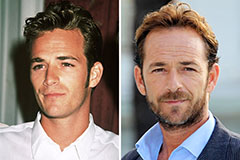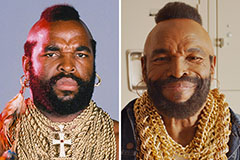In today’s fast-evolving digital world, content creators are increasingly blending various forms of artistic expression. One of the most dynamic intersections in this creative landscape is the fusion of music and digital art. As technology continues to revolutionize how we create and experience art, the combination of sound and visuals offers limitless possibilities for artists, musicians, and creators across the globe. This unique synergy is not just reshaping artistic practices but is also inspiring a new generation of creators to think beyond traditional boundaries, offering innovative opportunities for self-expression and engagement.
The Rise of Multimedia Platforms
The rise of platforms like YouTube, TikTok, Instagram, and others has provided unprecedented access to audiences worldwide. These platforms are not only spaces for showcasing music or visual art independently, but also for experimenting with new ways of merging the two. Modern creators, especially those in the digital sphere, are finding exciting new ways to blend sound and imagery to craft immersive experiences for their audiences.
Music videos, live-streamed performances, and experimental projects are prime examples of how creators merge audio and visual art into cohesive, impactful content. A popular example of this is the emergence of animated music videos, where the visuals complement and amplify the mood of the music, often telling a story or creating an atmosphere that deepens the listener’s emotional experience.
Similarly, "motion graphics" and "visuals for live music" have become a genre in themselves, where digital artists and musicians work together to craft unique, real-time audio-visual experiences. Whether it’s through virtual concerts, video installations, or online collaborations, these creations are a testament to the growing intersection of music and digital art.
The Role of Technology in Fusing Music and Art
The blending of music and visual art is driven, in large part, by advancements in technology. Tools like Adobe After Effects, Blender, and digital audio workstations (DAWs) allow artists to combine their respective crafts in unprecedented ways. In the past, creating multimedia content would require expertise in both audio production and visual design, but now, many creators can manage both areas themselves, thanks to user-friendly software and affordable tools.
Additionally, artificial intelligence (AI) and generative art technologies have opened new possibilities. Programs that respond to sound in real-time, generating visuals that adapt and change with the beat, tone, or pitch of the music, have become a tool for creators to visually interpret sound. These systems blur the line between the two mediums, creating a deeper connection between music and visual art and allowing creators to push the boundaries of traditional art forms.
Virtual Reality (VR) and Augmented Reality (AR) have also played significant roles in this fusion. VR allows users to experience music in immersive digital environments, while AR enables users to interact with music and visuals in real-world settings. This intersection is providing new opportunities for creators to build unique and interactive content that goes beyond traditional media.
Inspiring New Forms of Content Creation
The merging of music and digital art has inspired many new content creation trends, where the possibilities are endless. Here are a few notable examples:
1. Interactive Experiences:
Musicians and digital artists are increasingly collaborating to create interactive art installations and online experiences. Using VR, AR, and other immersive technologies, creators are allowing their audiences to participate in the creative process. These experiences invite the audience to engage with the music, change the visual landscape, or even influence the soundtrack through their actions.
2. Live Streaming & Virtual Concerts:
The global shift to online platforms during the COVID-19 pandemic accelerated the popularity of virtual concerts, where live music is accompanied by stunning digital art projections and interactive visuals. Artists such as Travis Scott in Fortnite, or the use of digital avatars in performances, have demonstrated how music and digital art can seamlessly work together to craft immersive live experiences.
3. NFT Art and Music:
The rise of NFTs (non-fungible tokens) has further fueled the integration of music and digital art. Musicians and digital artists are minting their works as NFTs, creating a new ecosystem for exclusive audio-visual content. This gives creators a way to monetize both their music and their visual art, while offering fans a unique opportunity to own one-of-a-kind digital creations.
4. Generative Music and Art Projects:
Artists are increasingly using AI to create generative music and visuals, where both the sound and the visuals are created through algorithms and machine learning. These projects invite the audience into a completely new creative process—one where the result is a continuous and evolving piece of art, reflecting the limitless potential of combining sound and visuals.
The Future of Music and Digital Art Collaboration
As digital technologies continue to advance, we can expect even more collaboration between music and digital art in the coming years. With AI, machine learning, VR, and AR tools constantly evolving, creators will have even more opportunities to craft immersive, multi-sensory experiences. The intersection of music and digital art holds the potential to reshape not only how we consume entertainment but also how we create and express ourselves in the digital age.
This convergence is inspiring a new generation of creators to think outside of the box. Whether they’re developing interactive media experiences, creating virtual art installations, or using generative algorithms to create one-of-a-kind audio-visual content, the possibilities for innovation are endless.
As digital content creation becomes more accessible, and as tools continue to evolve, music and digital art will continue to fuel each other in exciting, innovative ways. The future is bright for creators who embrace this intersection and push the boundaries of what is possible in the world of multimedia art.
Conclusion
The intersection of music and digital art is proving to be a powerful catalyst for creativity in the modern world. It’s inspiring new forms of content creation that blend sound, visual art, and interactive technology. For creators, this fusion opens up endless possibilities for innovative self-expression, artistic experimentation, and audience engagement. As technology continues to evolve, the fusion of music and digital art will only become more immersive, pushing the boundaries of what’s possible and offering an exciting future for content creators photos everywhere.
 Luke Perry Then & Now!
Luke Perry Then & Now! Mr. T Then & Now!
Mr. T Then & Now! Anthony Michael Hall Then & Now!
Anthony Michael Hall Then & Now! Elin Nordegren Then & Now!
Elin Nordegren Then & Now! Susan Dey Then & Now!
Susan Dey Then & Now!